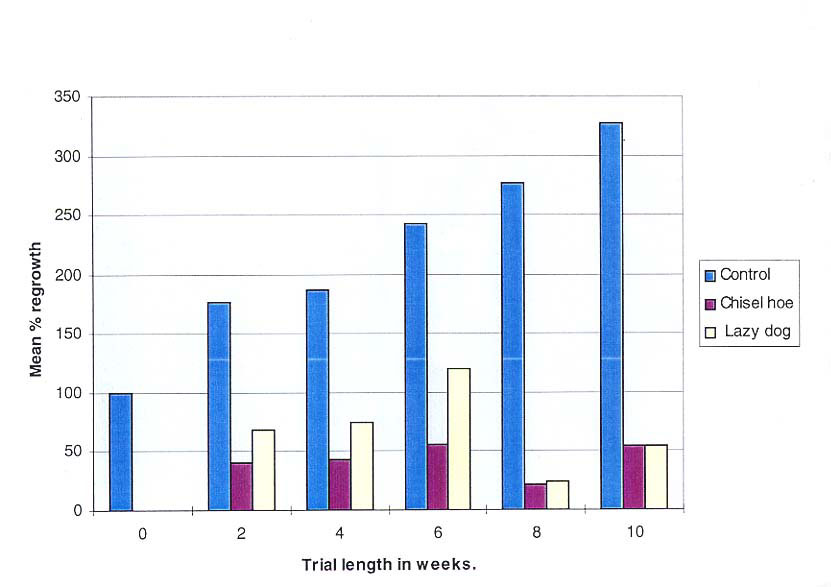Report T019 *****
Problem:
Creeping Thistle on permanent pastures
Where: Dog Tree Bank Farm, Goathland, North Yorkshire
When: May 2003
Status: Countryside Stewardship
Area: 4.04 Hectares (10 acres)
Detail: Serious infestation / permanent grazing / poorly
drained. (4 men, 1 week)
click map for larger version
This is a prime site for Canadian or Creeping Thistle. The ground is undrained / wet, and this plant thrives on moisture without fertility. The land is almost permanently grazed by sheep, which makes light much more available. Plants densities are at least 400 to 25 square metres, when an almost greater area appears to be covered by thistle rosettes, than grass (See photographs). .
Density: often 150 rosettes per 9 metres sq. Never less than 10 rosettes per 9 sq. metres.
Action taken: 24 man hrs Chisel-hoeing below the point of growth. May 1st 2003
72 man-hrs Chisel Hoing below the point of growth. May 30th.2003
A workforce of four tackled this job with Chisel Hoes in two separate visits. Early May & late May. This allowed one area to be chiselled twice, and where the impact of was greatest. Small 3 metre sq. plots were marked up, and the re-growth (or later-growth) was counted. In areas chiselled twice, the late rosette count was half of that in areas chiselled once. In August, the whole site was mown by an old tractor & reciprocating knife bar, which further reduced the vigour of the rhizome. Before 2003, the only treatment had been occasional scything.
An inspection during the summer of 2004 (a very wet time and ideal for Creeping thistle), showed that the 2003 work had made a considerable impact, reducing the number of shoot-rosettes from this particularly happy rhizome by at least one third.
More work with chisel hoes was needed to tame it further.
Total: 12 Man-days
Cost: £720. ( or £72 per acre)
Assessment: this is an on-going and expensive trial, with observations and actions still being planned. The plant has been weakened & seeding prevented, but the rhizome is still extremely vigorous. It will take two more consecutive years of chiseling, before long term control has been achieved. Cutting of late rosette groeth & re-growth, using a wide wheel based ‘Allen-type’ cutter, was recommended. This was done, and for the first time in years, some form of control of the Creeping thistle was under way.Three areas were marked out for re-growth records.
See below, graph of Canadian / Creeping thistle, confirming the efficiency of chisel-hoe work (compared to pulling).

(graph & research by J. Trevelyan. His thesis on Handwork control of weeds is available, see web-site)
